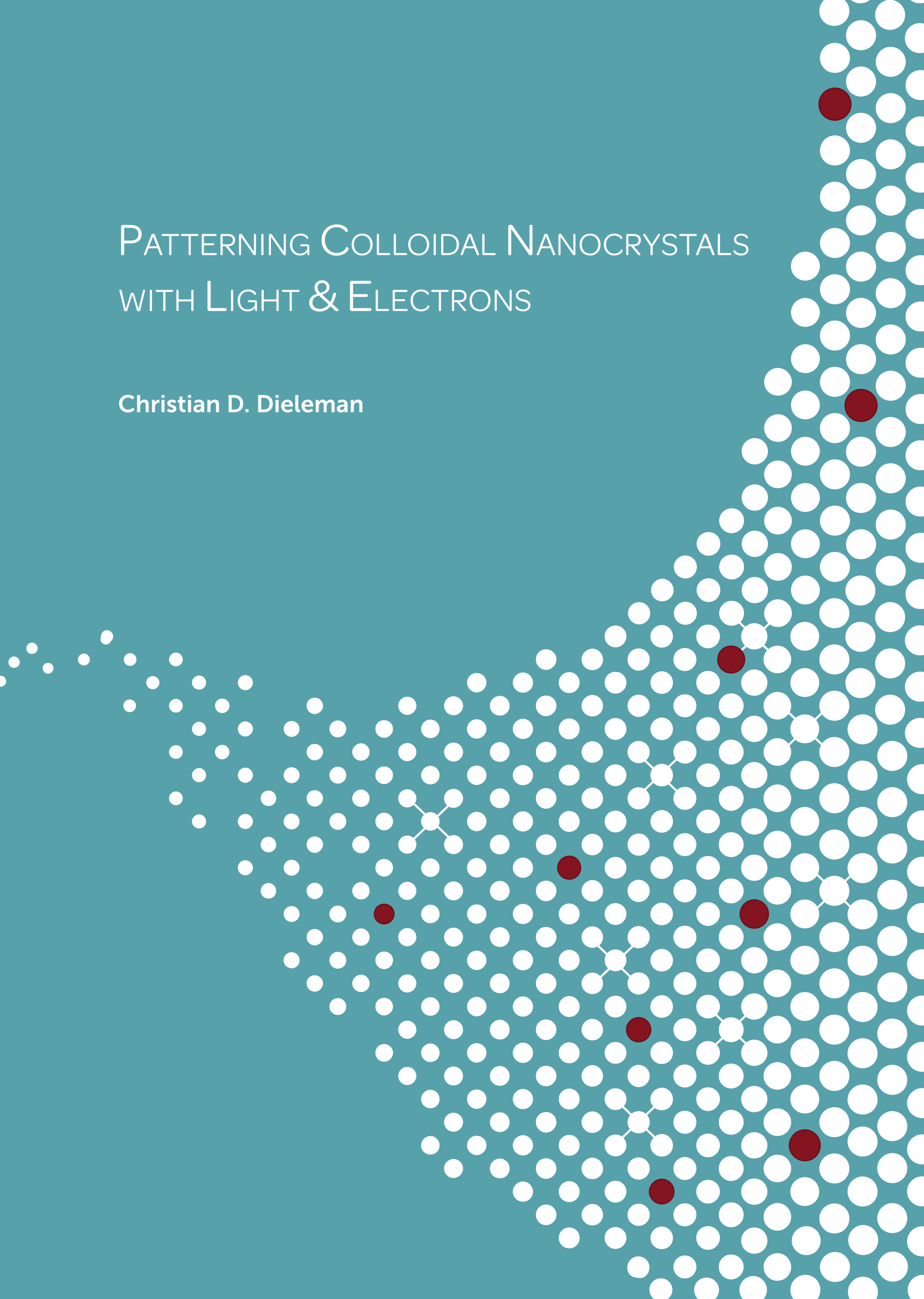Patterning Colloidal Nanocrystals with Light and Electrons
Colloidal quantum dots (CQDs) and other semiconductor nanocrystals (NCs), like perovskites, are nanosized semiconductor particles with a tunable bandgap and interesting optical properties. The simple synthesis and tunability of NCs makes it relatively easy to optimize the material for the intended application in terms of bandgap, absorption, emission wavelength, conductivity and compatibility with chemical environments. The tunability follows largely from changes in composition and synthesis, but patterning NCs at the nanoscale could provide another knob to turn in order to expand the usability of CQDs or improve their performance. In this thesis we present work on patterning of CQDs and NCs with several lithographic techniques.
CQDs and NCs can be patterned directly, in a one-step exposure process, by both photons and electrons. We exposed several different materials, PbS, CdSe and CsPbBr3, to an array of different exposure sources. We find that photons with an energy of 5.5 eV (λ = 225 nm), as well as the higher energy (91.9 eV, λ = 13.5 nm) light of Extreme UV sources, the new standard in high-volume nanolithography, can induce a solubility switch in the material by cross-linking the ligands of the NCs into a cohesive film, that is insoluble in non-polar solvents. At the same time, low-energy 3 eV electrons as well as highly-energetic 50 keV electrons can be used for CQD and NC patterning. The luminescent properties are relatively unaffected, making the fabrication suitable for e.g. the manufacturing of optical metasurfaces that influence the direction of light emission.









